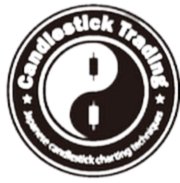CFD Copper Candlestick price action trading
This is a copper USD daily chart
Upper shadow is longer than previous shadow then price go up.
Here is upper shadow candlestick this candlestick upper shadow is longer than previous candlestick upper shadow so after price go up
Video click here
https://youtu.be/zX1JyhT7YGM
![]()
Some Price Action Trading Components
Price action trading is based on the price movement in the market.
Other than using any indicators, price action traders trade according to the price movements in the market.
Here are some components of price action trading.
Trading range
Once a trader has identified a trading range, then the trader will use the ceiling and floor levels as barriers that the market can break through,
with the expectation that the break-outs will fail and the market will reverse.
One break-out above the previous highest high or ceiling of a trading range is termed a higher high.
Since trading ranges are difficult to trade, the price action trader will often wait after seeing the first higher high
and on the appearance of a second break-out followed by its failure.
This will be taken as a high probability bearish trade, with the middle of the range as the profit target.
This is favored firstly because the middle of the trading range will tend to act as a magnet for price action.
Secondly, because the higher high is a few points higher and therefore offers a few points more profit if successful.
Thirdly due to the supposition of two consecutive failures of the market to head in one direction, this will result in a tradable move in the opposite.
Chop aka churn and barb wire
When the market is restricted within a tight trading range and the bar size as a percentage of the trading range is large, price action signals may
still appear with the same frequency as under normal market conditions.
But their reliability or predictive powers are severely diminished.
Barb wire and other forms of chop demonstrate that neither the buyers nor the sellers are in control or able to exert greater pressure.
A price action trader that wants to generate profit in choppy conditions would use a range trading strategy.
Trades are executed at the support or resistance lines of the range while profit targets are set before price is set to hit the opposite side.
Especially after the appearance of barb wire, breakout bars are expected to fail and traders will place entry orders just above or
below the opposite end of the breakout bar from the direction in which it broke out.
